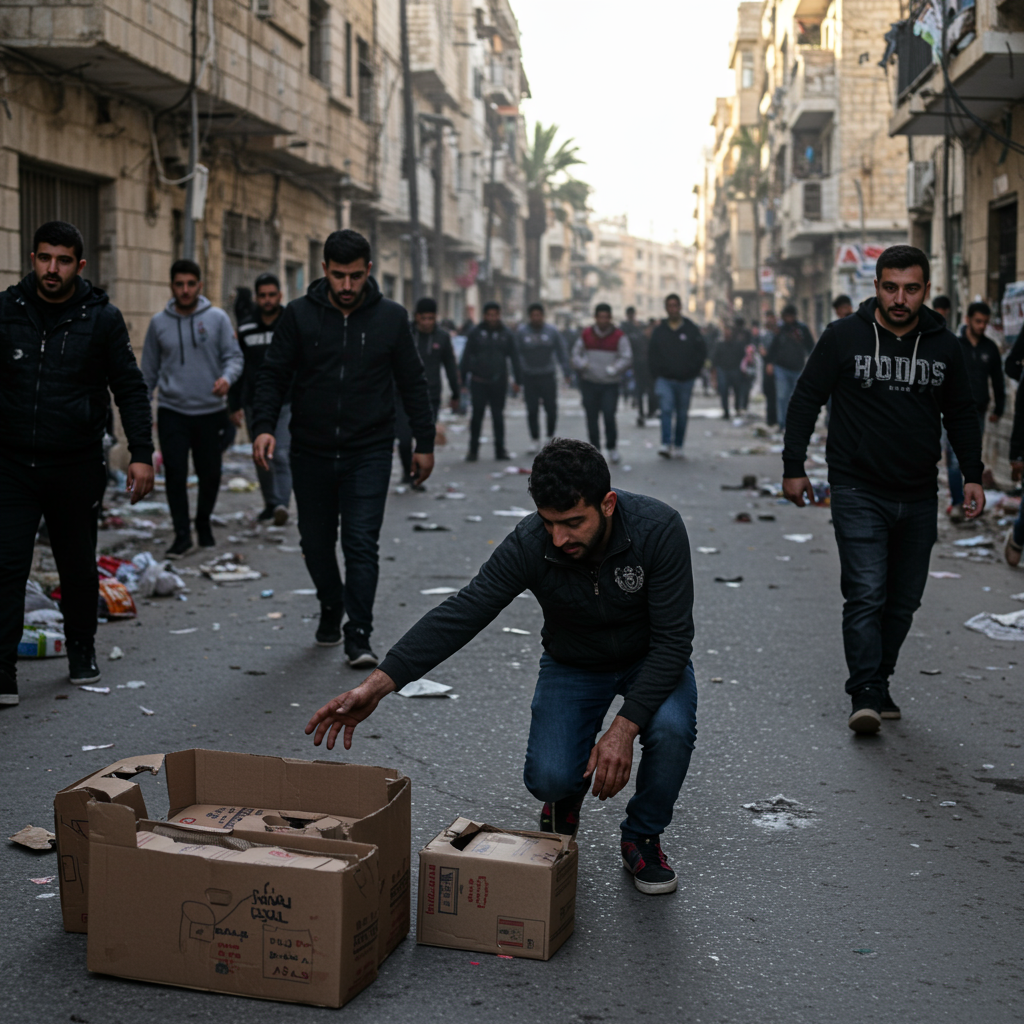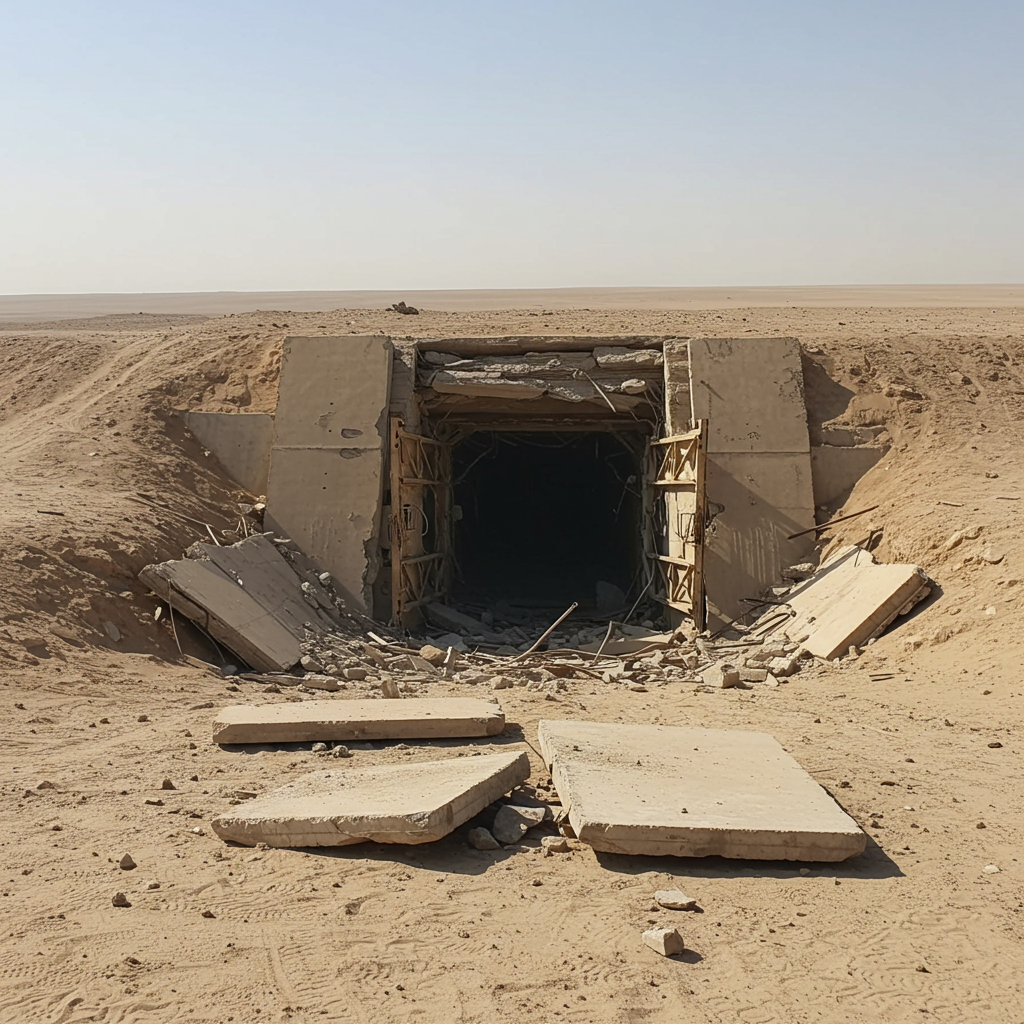A critical breakdown of security across the Gaza Strip is exacerbating a severe humanitarian crisis, leaving desperate civilians struggling to access essential food and aid amidst widespread hunger and lawlessness. The situation is particularly acute in northern Gaza, where aid access remains exceptionally difficult.
Security Collapse and Escalating Lawlessness
Reports from main cities like Gaza City indicate a state of chaos, with security personnel stretched thin or absent. This vacuum has reportedly led to instances of looting as desperate people search for sustenance. The Hamas-run interior ministry claimed that an Israeli air strike in Gaza City killed seven of its police officers who were attempting to restore order at a market and confront what they termed “looters.” The Israeli military, while stating it had struck “dozens of terror targets” across Gaza on the same day, did not specifically comment on this incident, asserting it operates according to international law and takes precautions to mitigate civilian harm.
The increase in lawlessness is linked to the targeting of Gaza’s interior ministry police forces over the past year, which Israel cites as being tied to Hamas governance. Following strikes that killed senior police officials, the ministry maintained the force was a “civilian protection agency,” while the Israeli military accused it of “violating human rights and suppressing dissent.”
Desperation at Aid Distribution Points
The desperate search for food has led to chaotic scenes at aid distribution centres. One recent incident involved a break-in at a UN World Food Programme (WFP) warehouse, where “hordes of hungry people” reportedly sought food after an extended blockade. Another event saw thousands attempting to access a new aid site run by the US and Israeli-backed Gaza Humanitarian Foundation (GHF) in Rafah, resulting in conflicting reports of injuries, with a senior UN official stating nearly 50 people were shot and injured, while the Israeli military claimed troops fired only warning shots into the air, and the GHF denied any shots were fired at its centres.
Witnesses at these sites describe thousands gathering from dawn, eventually overwhelming gates and rushing into courtyards to grab any available boxes or sacks of flour. The struggle for supplies is particularly difficult for the elderly and vulnerable, who are often unable to compete with younger, stronger individuals. One witness described the scene as “humiliating,” while another spoke of leaving empty-handed despite the presence of aid, highlighting the inequity where “some people eat and some people don’t” and calling for better organization.
A Catastrophic Hunger Crisis
The breakdown in security occurs against a backdrop of extreme and escalating hunger. According to aid organizations and UN officials, the scale of food insecurity in Gaza is unprecedented. Assessments indicate that nearly half of all Gazans are starving, with nine out of ten people not eating enough daily and facing profound uncertainty about their next meal.
UN officials have described desperate individuals stopping aid trucks and eating food immediately upon receiving it, a stark illustration of the extreme need driven by total despair. At one point, due to hostilities and restrictions, aid had been largely unable to enter Gaza for weeks, leading to critical shortages of food, fuel, and medical supplies. International bodies stress the critical need for vastly scaled, safe, reliable, and unimpeded humanitarian access, emphasizing that more than one entry point into Gaza is indispensable to meet the population’s immense needs.
Mass Displacement and Dire Living Conditions
Adding further complexity to the crisis is the staggering level of mass displacement. An estimated 90% of Gaza’s population has been forced to flee their homes, with many displaced multiple times. Millions are now crammed into severely overcrowded shelters or living in inadequate conditions, including in the open air amidst mud and rain, as winter approaches. This mass movement has completely overwhelmed the capacity of aid organizations to provide essential supplies and services.
Critical infrastructure has suffered immense damage, with a significant portion of water infrastructure destroyed or non-operational due to lack of fuel. This severely limits access to clean water, leading to growing concerns about dehydration and the rapid spread of infectious diseases like vomiting and diarrhoea, particularly among vulnerable children in congested shelters.
Contested Aid Mechanisms
Amidst the operational chaos, new aid distribution systems have emerged, prompting controversy. The US and Israeli-backed GHF established distribution sites bypassing traditional UN channels. These sites are protected by US security contractors and located in areas controlled by the Israeli military in southern and central Gaza. The UN has refused to cooperate with this system, deeming it unethical and unworkable, with one official stating it is “essentially engineering scarcity” as it cannot possibly meet the needs of the vast population. US and Israeli officials justify this approach by claiming it prevents aid diversion by Hamas, an accusation the group denies.
Humanitarian Toll and Ongoing Conflict
The humanitarian crisis unfolds within the context of the ongoing conflict that began after Hamas’s cross-border attack on October 7, 2023, which resulted in significant casualties and the taking of hostages. Since then, tens of thousands of people have been killed in Gaza, including a high proportion of women and children, with many thousands more injured. The healthcare system is described as shattered, facing severe shortages of medication and supplies, with many hospitals non-functional or overwhelmed.
Efforts to secure a ceasefire and facilitate humanitarian relief continue amidst complex negotiations over the remaining hostages and the terms for ending hostilities. While temporary pauses have allowed some aid delivery and exchanges, a lasting resolution remains elusive, perpetuating the cycle of violence and suffering.
The situation in Gaza, marked by a critical breakdown in security and rampant hunger fueled by restricted access and ongoing conflict, highlights the devastating human impact on a population facing unimaginable daily struggles for survival. International organizations underscore that while aid is crucial, it is not a substitute for a lasting political resolution that can ensure safety, dignity, and stability for all residents.
References
- https://www.ochaopt.org/content/lisa-doughten-s-remarks-security-council-behalf-emergency-relief-coordinator-martin-griffiths
- https://www.bbc.com/news/world-middle-east-67039975
- https://www.redcross.org.uk/stories/disasters-and-emergencies/world/whats-happening-in-gaza-humanitarian-crisis-grows
- https://news.un.org/en/story/2023/12/1144807
- https://press.un.org/en/2023/sc15473.doc.htm




